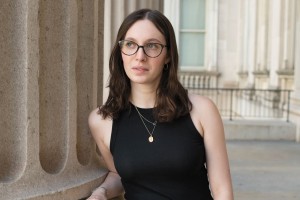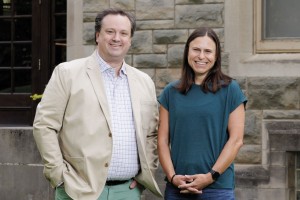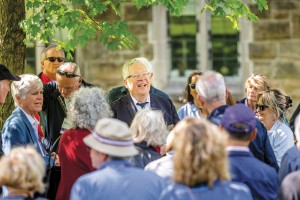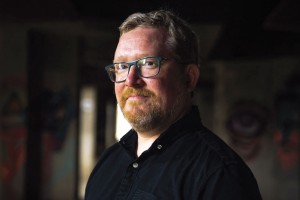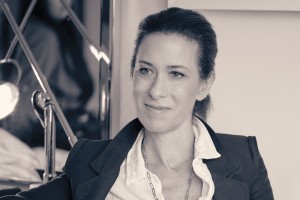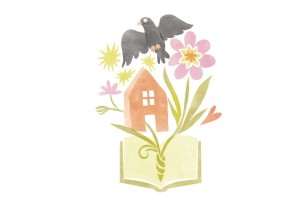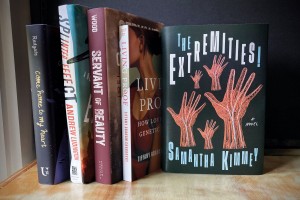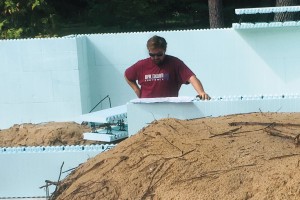The Kenyon Alumni Starter Kit
24 ways to reconnect, stay engaged and make the most of your Kenyon community.
Read The StoryWhy children’s book author Amy B. Mucha ’94 never stopped believing in magic.
When her kids were young, Amy (Burnham) Mucha ’94 loved reading to them so much she hand-wrote and illustrated children’s books on folded sheets of colored paper, with names like “The Girl Who Was Loved” and “The Smiling Pig.”
It didn’t occur to her that other children might also enjoy these stories until she shared a few with the teacher in whose second-grade classroom she was volunteering at the time. The teacher asked Mucha to read them to the kids — and then, something magical happened.
As the students applauded at the end of her reading, Mucha could hear herself blurting out an impulsive promise: she would write them a brand-new story, one that included each of their names and favorite words — and she’d return to read it to them in three days.
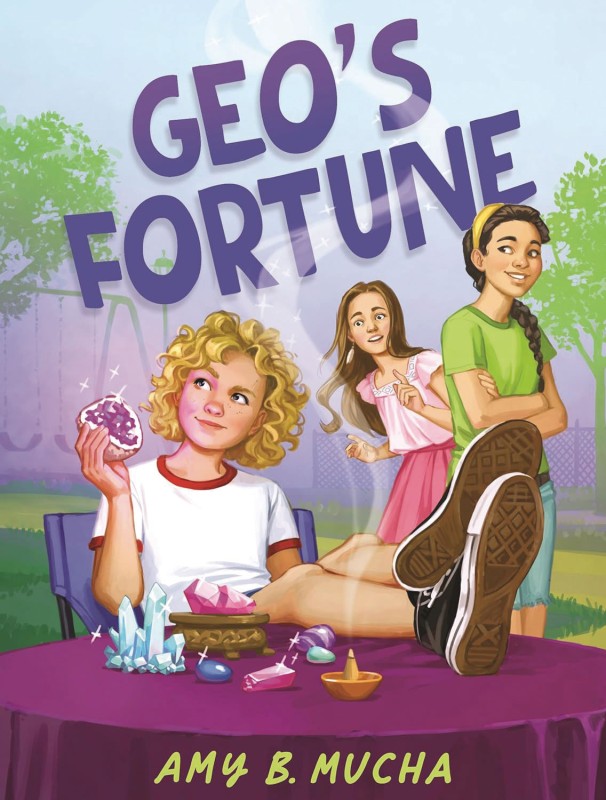
Later, as she read over the kids’ slips of paper, panic set in. Why had she promised to write a story in just three days? But eventually, inspiration struck, and she drafted the story that would eventually grow into her first middle-grade novel, “Geo’s Fortune,” published by Peachtree Publishing in May.
In the book, 13-year-old Geo Leoni sets up a pretend fortune-telling stand to earn money for her struggling family, borrowing her best friend Lana’s rock collection as props. But when her made-up predictions start to come true, Geo must question whether her psychic gift is real or only in her imagination.
“Geo’s Fortune” has earned rave reviews from readers and critics alike, with Kirkus calling it “a glimmering, mind-expanding story of friendship, science, and magic.”
From her home in Hanover, New Hampshire, Mucha talked about the origins of the book, her passion for both science and magic, and what it means to write for young readers today.
What first drew you to Kenyon?
The writing. And it was a love-at-first-step moment. I got out of the car and was like, “Oh, this is where I’m going.” It was the only school I ever applied to.
How did Kenyon shape you as a writer?
I already loved reading and writing, but Kenyon took me to such a different level. When I graduated, I wrote one novel. It was very bad — a children’s book, actually. I’ve been drawn to writing for children forever, but I was so horrified by how bad it was that it set me off. I had to learn the craft. When my kids were little, that’s when I started writing again. When they went to school and I had some time, I thought, “Let’s actually try this again.” I went about it properly this time, learned what I was doing, and that’s how I ended up becoming a writer.
Prior to “Geo’s Fortune” you published a picture book, “A Girl’s Bill of Rights,” for younger readers. How did you get into the mindset of the kids you were writing for?
Oh, I cheated. In the first version I wrote for “Geo’s Fortune,” my son was the same age as the characters. Kids are so funny and bright, and full of surprises. I feel like I should have every one of his friends listed as co-authors because I was picking up so much about their cadence, how they speak and what they find funny. Then, when I was rewriting, my daughter was that age. So again — it was like I had a built-in source. Some authors are brilliant and can just go there themselves, maybe because they remember so well what it was like to be a certain age. But I used my kids.
Can you describe the spark of inspiration behind “Geo’s Fortune”?
I was pacing around my house with about 50 slips of paper scattered on the dining room table, until one word jumped out: fortune. I got chills. It could mean money, fortune-telling, or both. Having a girl set up a fortune-telling stand was the perfect way to include all the kids’ names as the ones getting their fortunes read. Geo looks exactly like the little girl who gave me the word “fortune,” and Lana is exactly like the tall girl who loved science.
Magic is a big theme in your book. Have you always had an interest in magic?
Definitely. The main characters are kind of three facets of me. I was raised by very grounded, rational, skeptical people, and I was the weird kid who, because of the books I read, fully believed in magic. My favorite book when I was little was “The Secret Garden,” and it’s full of magic. When I wrote “Geo’s Fortune,” I thought maybe if I had these three characters come together and make peace with their different sides, I’d find peace in myself.
Do I really believe magic is possible? I don’t know. Nobody knows. But it’s really fun to believe in magic. We don’t have to leave that in childhood. As long as we keep our wits and perspective, why not have fun and keep believing?
The rock readings (telling fortunes based on rocks people select) are such an interesting manifestation of Geo’s talent. How did you come up with the idea?
People have always been into crystals, but as far as I know, “rock reading” was all mine. I hadn’t heard of it anywhere else. I was a little bit of a rock nerd as a kid — I won my seventh-grade science fair with a rock project. The character Lana was born as a rock lover, so combining her scientific knowledge of rocks with magic felt natural. Writing those rock readings was my favorite part of the book. They almost wrote themselves.
What advice would you give to someone who wants to write for younger readers?
Read children’s books. If you want to write picture books, read a thousand of them — especially new ones, not just classics. Learn the market, go to conferences and network. And learn the industry rules. There are unspoken standards about length, age of characters and structure. Don’t expect your first book to be published. You earn your chops by writing and failing. And don’t underestimate kids. They’re sharp, and they’ll notice if you talk down to them.
What’s next for you?
The market for kids’ books is contracting. People say kids don’t read anymore. It’s tough. I feel like I slipped in as the door was shutting, and I couldn’t be more thrilled. I’m lucky to have those books out there. But I’ll always write because I love it.
24 ways to reconnect, stay engaged and make the most of your Kenyon community.
Read The StoryLooking back at the work and legacy of Graham Gund ’63 H’81, who died in June.
Read The StoryMeet the alumni entrepreneurs, makers and innovators reshaping the food business.
Read The Story